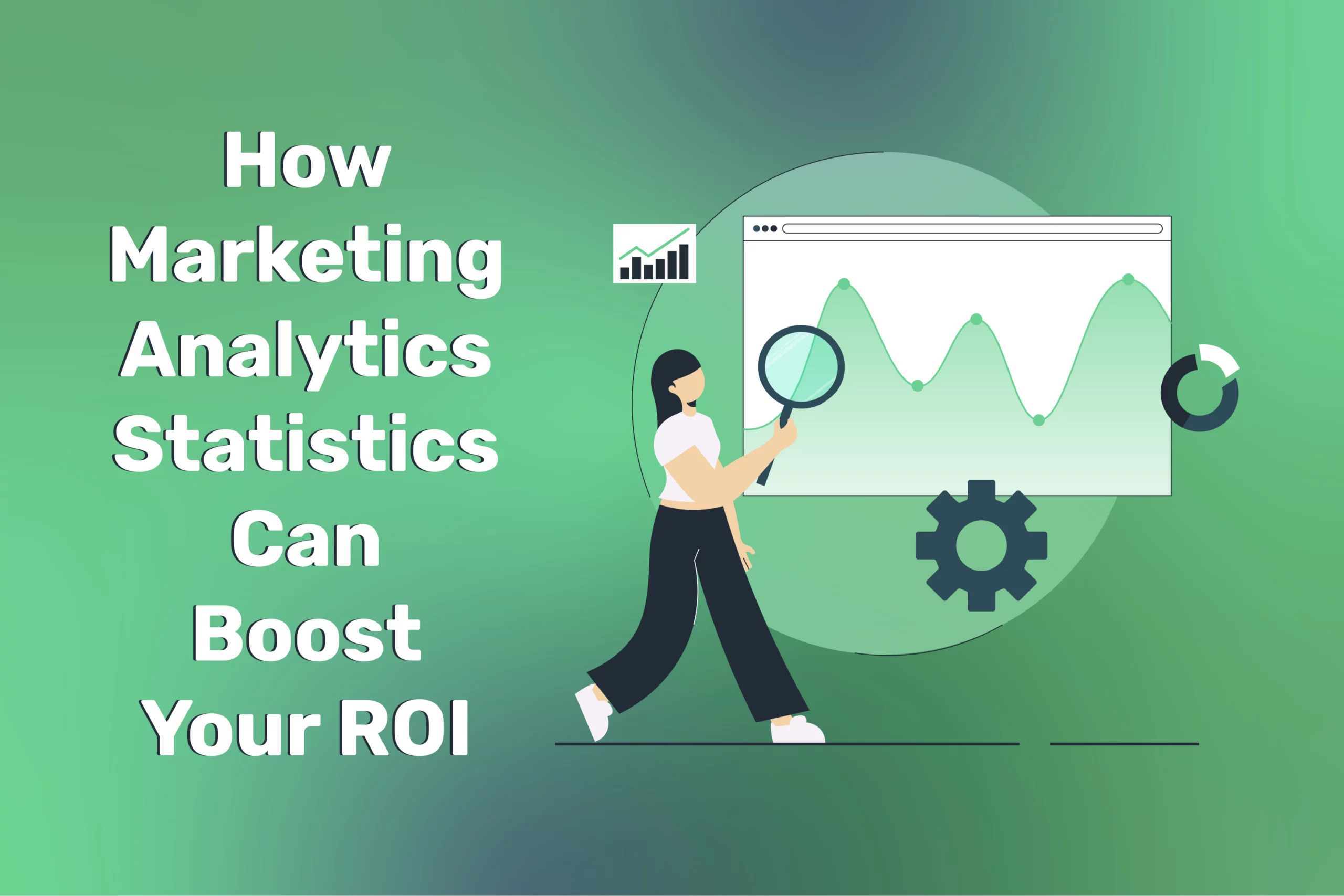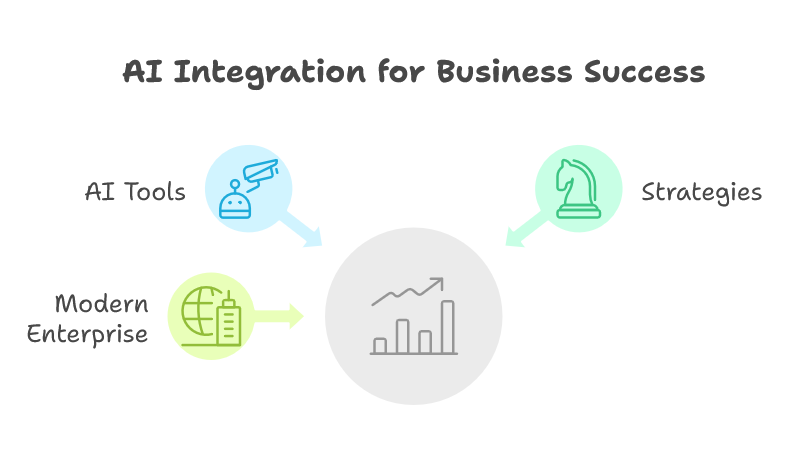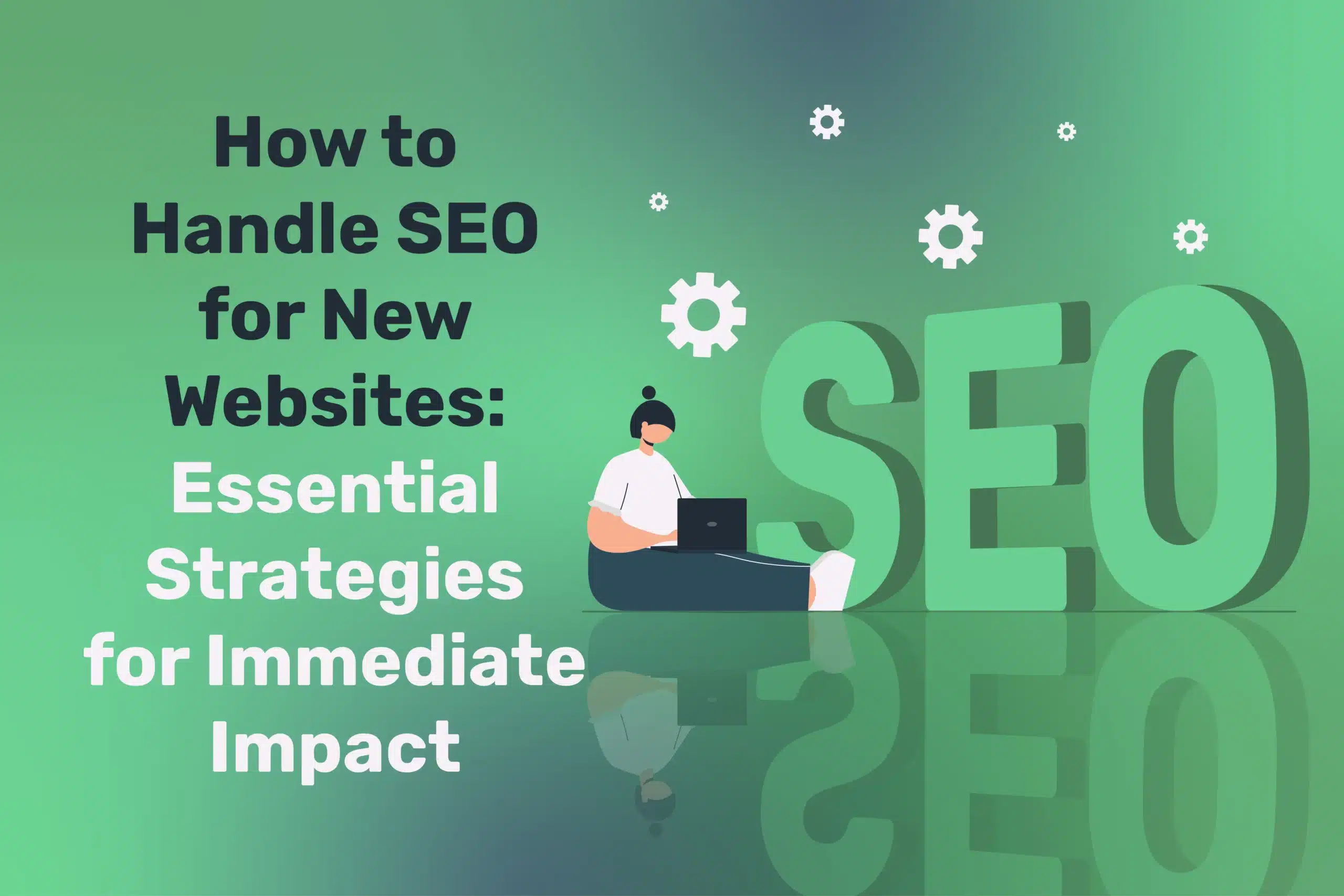
Leveraging AI for SMEs: Enabling Automation Without Breaking the Bank
Table of Contents
For years, the terms “artificial intelligence” and “machine learning” seemed reserved for big tech giants or well-funded multinationals. Yet the landscape by 2025 has changed drastically: AI tools—particularly those revolving around automation—have become more accessible, cost-effective, and user-friendly, making them a viable avenue for small and medium enterprises (SMEs), too. SMEs are often pressed for resources and labour but handle essential tasks (from accounting to customer support) that can benefit immensely from automation.
This article explores why AI is no longer out of reach for smaller businesses, detailing practical, budget-friendly approaches that boost productivity and free up staff for higher-value work. If you’ve assumed AI is too expensive, complex, or irrelevant for an SME, read on to discover how small companies are disrupting markets by integrating AI-driven automation into their everyday processes.
“AI levels the playing field for small firms, granting them capabilities once exclusive to large corporations. With the right planning, SMEs can implement automation cost-effectively and see tangible growth,” notes Ciaran Connolly, Director of ProfileTree.
Leveraging AI for SMEs: The Changing Landscape
The AI landscape is evolving rapidly, and small and medium-sized enterprises (SMEs) are no longer on the sidelines. Once dominated by large corporations with deep pockets, artificial intelligence is now more accessible and affordable than ever. From automation and data-driven insights to personalised customer experiences, AI is transforming how SMEs operate, compete, and grow. As new tools emerge and AI adoption accelerates, understanding these changes is crucial for businesses looking to stay ahead.
Democratisation of AI Tools
Software-as-a-service (SaaS) platforms have proliferated, offering plug-and-play AI solutions for tasks like data entry, invoice processing, or email marketing personalisation. Instead of requiring a dedicated data science team, SMEs can pay monthly fees for services that deliver AI-driven features off the shelf. Low-code or no-code solutions further lower technical barriers, enabling staff with minimal coding experience to automate workflows.
Cloud and Subscription Models
Cloud computing eliminates the need for SMEs to invest in expensive on-premise infrastructure. Instead, they rent computing power on demand, only paying for what they use. This usage-based model suits smaller firms with fluctuating workloads, letting them scale AI experiments without heavy upfront costs.
Competitive Pressures
Large firms are rapidly adopting automation to reduce labour costs, speed up processes, and generate advanced insights. To stay competitive, SMEs feel pressured to match similar levels of efficiency. But the good news is that modern AI solutions are flexible enough to integrate with popular small business platforms (e.g., QuickBooks, Shopify, HubSpot), bridging the technology gap.
Identifying High-Impact AI Automation Opportunities
SMEs can maximise AI by automating repetitive tasks, streamlining data processing, and enhancing customer interactions. High-impact opportunities include AI chatbots for support, predictive analytics for marketing, and automated invoicing for efficiency. By focusing on cost-saving and decision-making improvements, SMEs can stay agile and competitive.
Repetitive Back-Office Tasks
Many SMEs spend countless hours on data entry, invoice matching, and updating spreadsheets. AI-based robotic process automation (RPA) can handle routine tasks—like moving data from emails into CRMs or reconciling purchase orders with inventory systems. This not only reduces errors but frees staff for more strategic duties.
Example: An e-commerce boutique might use an automation service to scrape new order details from its email confirmations and input them directly into a shipping label tool, cutting manual labour by 80%.
Customer Support and Chatbots
Responding to common inquiries—shipping status, product availability, appointment bookings—can overwhelm small teams. AI chatbots can provide instant, 24/7 first-line support, answering FAQs and gathering preliminary info. If the query is more complex, the bot escalates to a human agent with context already logged. This synergy ensures customers never wait in long queues, and your support staff only handle nuanced issues.
Sales and Marketing Automation
AI can help segment leads, forecast sales, or even generate personalised product recommendations. For example, an AI-driven email marketing platform analyses user behaviours (clicks, past purchases) to send targeted messages. Some SMEs see double-digit improvements in email open rates and conversions thanks to these personal touches.
Inventory Management and Demand Forecasting
SMEs in retail or manufacturing often struggle with overstock or stockouts. AI-based forecasting tools examine historical sales, seasonal trends, and external factors (like local events or weather patterns) to predict future demand. With improved accuracy, SMEs save costs by maintaining optimal inventory and minimising leftover stock or missed sales.
Cost-Effective AI Implementation Strategies
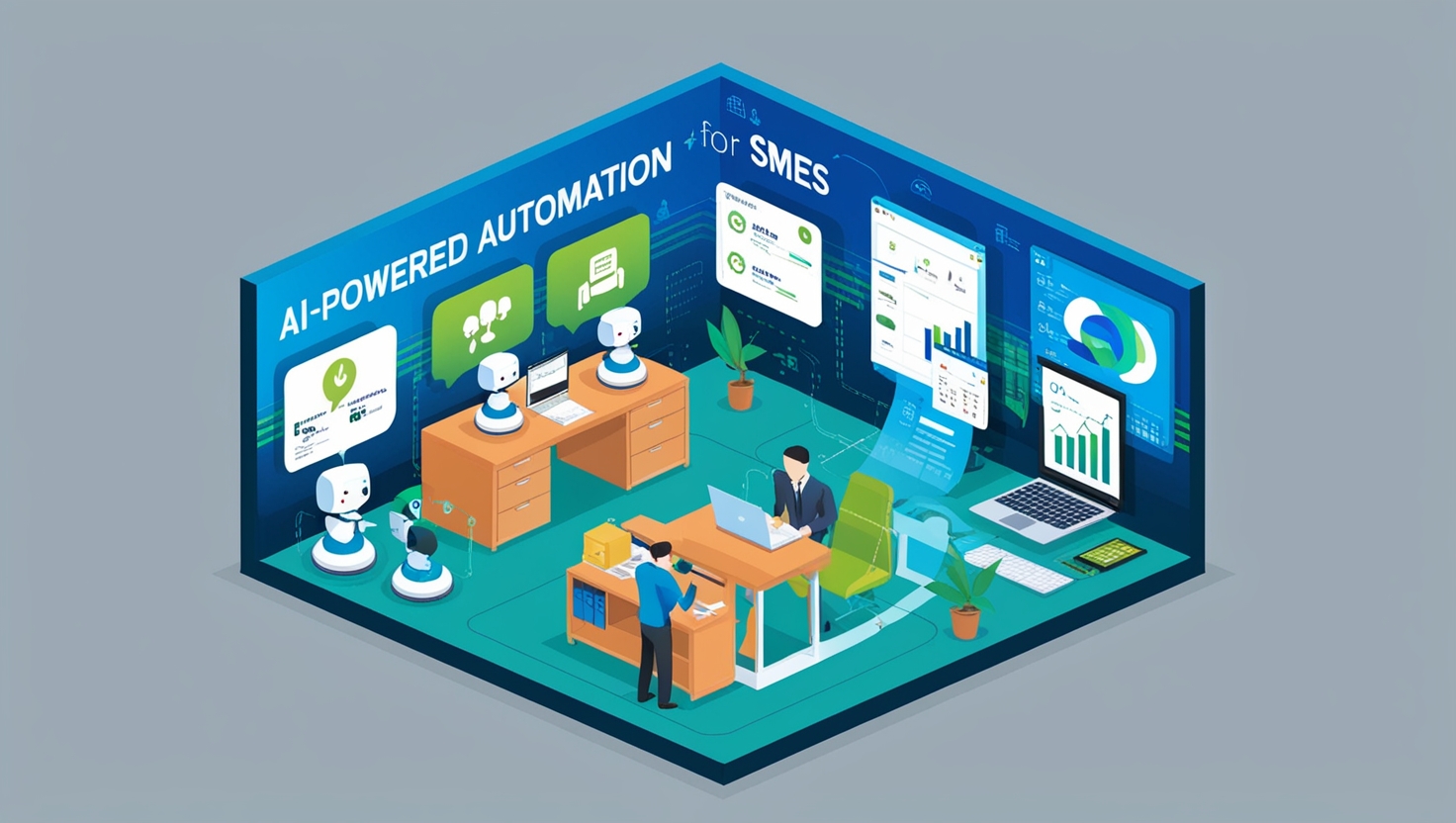
SMEs can adopt AI cost-effectively by starting small with scalable tools like AI-powered chatbots or automated analytics. Cloud-based AI services reduce infrastructure costs, while no-code platforms simplify implementation. Prioritising high-impact areas and leveraging free trials or pay-as-you-go models help maximise value without overspending.
Start Small with Pilot Projects
Rather than a full-scale AI transformation, pick a specific, high-impact area—like automating invoice entry or launching a customer support bot. Define clear success metrics (e.g., 50% reduction in manual hours, 80% first-contact resolution). With a successful pilot, you build confidence, refine processes, and gather internal champions who see the benefits.
Use Off-the-Shelf SaaS Tools
From chatbots (ManyChat, Tidio) to AI email marketing (Mailchimp’s ‘Smart Sending’ features) to quick RPA solutions (UiPath, Automation Anywhere, but scaled for SMEs), many tools are priced on monthly subscriptions that scale with usage. Evaluate features, read reviews from other SMEs, and test free trials to confirm ROI potential.
Partner with AI Consultants or Agencies
Hiring a full-time data scientist can be expensive for an SME. Instead, consider short-term engagements with AI consultants who’ve worked on small-scale automation. They can advise on tool selection, integrate solutions with your current systems, and train staff to maintain it. Over time, if your needs grow, you might consider building an in-house skill set.
Tap into Government Grants and Programmes
Some regions offer innovation grants, tax relief, or digital transformation funds encouraging SMEs to adopt modern tech. Keep an eye on local development agencies or government websites. That extra financial support might offset consultancy costs or subsidise software licences.
Overcoming Common Concerns
Many SMEs hesitate to adopt AI due to cost, complexity, and integration challenges. However, cloud-based AI solutions and no-code tools simplify adoption while keeping expenses low. Addressing data privacy concerns with secure platforms and gradual implementation helps ease the transition. With the right approach, AI can be both accessible and beneficial.
Fear of Complexity
Staff might worry AI is complicated, requiring coding or advanced maths. But modern platforms hide the complexity behind intuitive dashboards. Basic tasks—like setting up an if-this-then-that rule—need minimal training. Offer short workshops or documentation showing how straightforward it can be to create an automation workflow.
Budget Constraints
While large corporations can spend millions on advanced AI, SMEs need to be more cautious. Evaluate the potential cost savings or revenue gains from a pilot. If automating invoice processing saves 10 hours a week, how many labour hours is that monthly? The ROI might justify a small monthly subscription or consultant fee.
Data Privacy and Security
Storing business or customer data in third-party AI solutions raises GDPR or compliance concerns. Choose reputable vendors with robust encryption and compliance certifications. For highly sensitive data, some tools let you maintain local control or mask personally identifiable info before analysis.
Staff Resistance
Automation can trigger fear of job replacement. Communicate that the goal is to reduce drudgery, not cut positions. Freed time can be reinvested in skill development, better customer service, or strategic projects. Empower staff with training so they see AI as a collaborator, not a threat.
“AI won’t remove human creativity or empathy—it simply removes mundane tasks so your team can excel at what they do best: building relationships and innovating,” emphasises Ciaran Connolly.
Practical Tools and Use Cases for SMEs
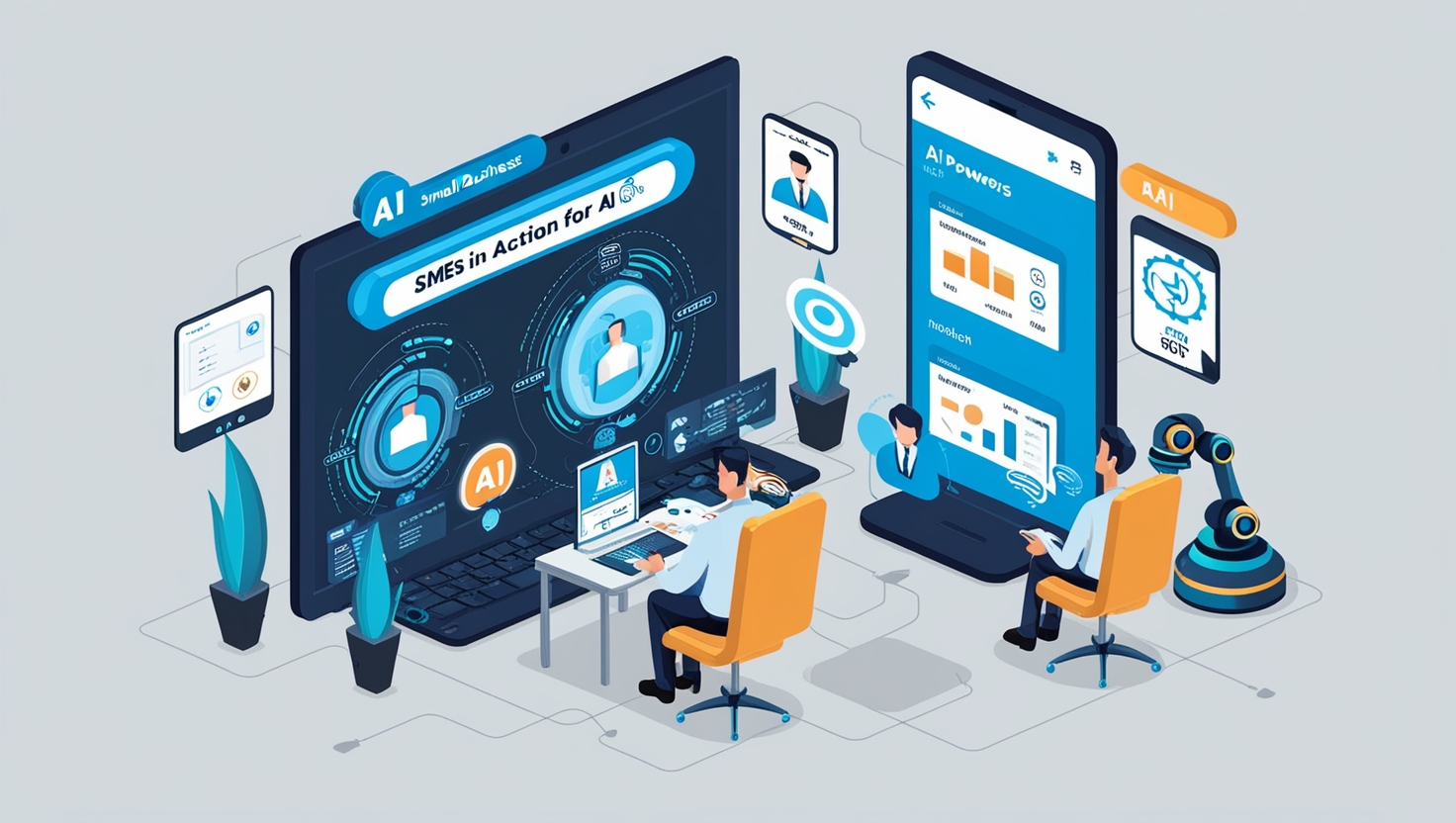
SMEs can leverage AI tools like chatbots for customer service, predictive analytics for marketing, and automation for accounting and inventory management. Platforms such as ChatGPT, Google Analytics, and Zapier streamline operations without requiring deep technical expertise. By integrating AI into daily tasks, SMEs can enhance efficiency, reduce costs, and improve decision-making.
Bookkeeping and Invoice Management
AI-powered accounting tools like Xero, QuickBooks, and specialised add-ons streamline financial processes by automatically reading PDF invoices, extracting data, and reconciling them with purchase orders. This significantly reduces manual data entry, saving time and minimising errors.
Additionally, these systems can detect anomalies or duplicate entries, enhancing accuracy and fraud prevention. For small accounting teams, this level of automation is a game-changer, allowing them to focus on strategic financial planning rather than tedious administrative tasks.
Email Marketing Personalisation
Platforms like ActiveCampaign or Mailchimp use AI to recommend send times, segment lists by predicted interest, or draft subject line variants for A/B testing. SMEs see higher engagement without needing an entire marketing department analysing metrics daily—AI handles that heavy lifting.
Customer Churn Prediction
AI-based CRMs (like HubSpot or Salesforce with integrated AI modules) might track usage patterns or purchase frequency, identifying customers at risk of leaving. SMEs can proactively offer them discounts, check-ins, or loyalty perks, retaining business that might otherwise slip away.
Social Media Automation
As AI continues to evolve in 2025, SMEs must tackle challenges such as shifting regulations, data privacy concerns, and rapidly changing customer expectations. Keeping up with compliance requirements and adopting ethical AI practices will be crucial for maintaining trust and avoiding legal pitfalls.
Additionally, the fast-paced nature of AI advancements means businesses must invest in adaptable tools that can scale with their needs. Prioritising continuous learning through employee training and staying informed on emerging trends will help SMEs navigate these challenges effectively. By embracing flexibility and innovation, SMEs can turn potential obstacles into opportunities for long-term success.
Website Chatbots and FAQ Automation
Services like Tidio, Intercom, or Chatfuel offer affordable monthly plans. Configure a basic conversation flow for common queries—store hours, shipping times, product details—improving customer satisfaction. If the conversation escalates, a real agent steps in. Another synergy is collecting user data via chat for email list growth.
AI Training and Upskilling for SME Staff
Equipping SME staff with AI skills ensures smooth adoption and maximises its benefits. Online courses, workshops, and hands-on training with AI tools help employees adapt. Platforms like Coursera, Udemy, and LinkedIn Learning offer affordable AI education. Encouraging a culture of continuous learning empowers teams to leverage AI effectively.
Fostering a Culture of Continuous Learning
Encourage employees to take short online courses or workshops in AI fundamentals. They don’t need to code neural networks from scratch, but understanding AI’s capabilities, limitations, and potential pitfalls can reduce fear. Leaders must exemplify this learning culture by championing new automation initiatives.
Hands-On Workshops
Practical sessions—like “Automation Day”—where staff bring a repetitive challenge and attempt to build a small RPA workflow fosters immediate value. Seeing their own tasks vanish in front of them builds confidence and excitement. Possibly partner with local tech groups or AI agencies offering half-day training.
Appointing an “Automation Champion”
If feasible, designate a staff member with an interest in tech to be your internal go-to person. They learn advanced features in your chosen AI tools, help others set up flows, and keep track of new solution updates. This champion ensures the knowledge is in-house, lowering dependency on external consultants.
Leveraging External AI Consultants
For more advanced or customised needs—like integrating multiple data sources, building a predictive model, or ensuring robust data governance—AI consultants remain an option. They can kickstart the technical aspects while teaching your champion or IT staff how to maintain and scale solutions. Just be sure to define scope and deliverables clearly to avoid spiralling costs.
Measuring ROI and Impact
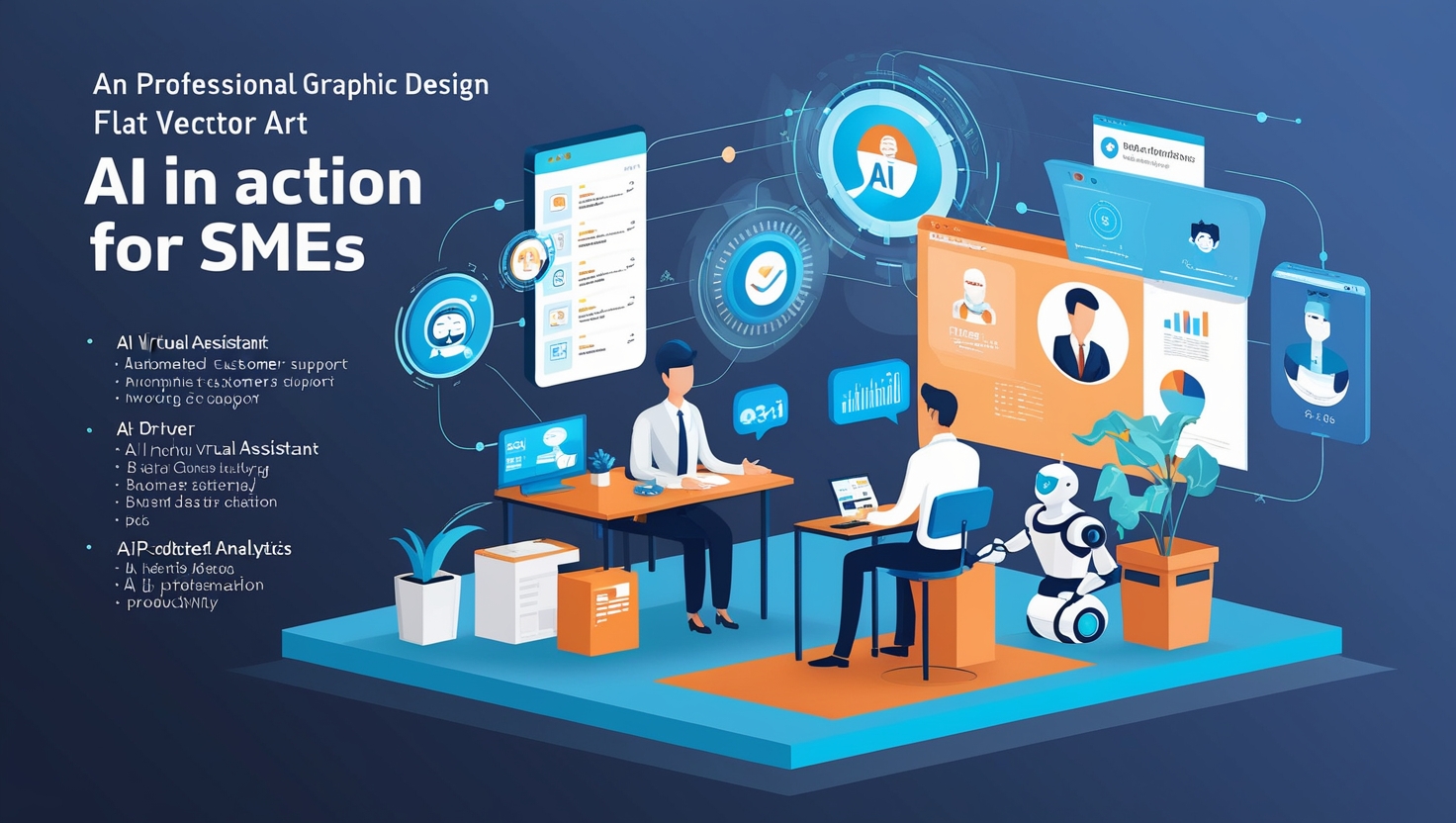
To gauge AI’s effectiveness, SMEs should track key metrics like cost savings, efficiency gains, and revenue growth. Monitoring customer satisfaction, lead conversions, and time saved on tasks provides measurable insights. Using analytics tools, businesses can refine their AI strategies and ensure a strong return on investment.
Defining Clear Metrics Early
Before deploying AI automation, set success criteria. For instance:
- Time Saved: e.g., 30% fewer staff hours spent on manual data entry.
- Error Reduction: e.g., halving invoice matching errors each month.
- Sales Uplift: e.g., 10% higher conversion from AI-personalised email campaigns.
- Support Load: e.g., reduce routine customer queries by 50% via chatbots.
Tracking these metrics helps validate the investment and justify expansions.
Continuous Monitoring
AI performance might degrade if data patterns shift, or if staff inadvertently bypass certain automations. Keep an eye on usage, watch logs for anomalies, and do periodic user satisfaction checks. For instance, if staff revert to manual invoice handling, find out why—maybe the AI tool needs better training or you need a revised workflow.
Encouraging Staff Feedback
The real frontline measure is staff sentiment: do they find AI tools helpful or burdensome? Are tasks truly simpler or do new complexities arise (like software glitches)? Create open feedback channels or schedule monthly roundtables to gather insights and refine processes.
Overcoming Evolving Challenges in 2025
As AI advances, SMEs must navigate challenges like regulatory changes, data privacy concerns, and evolving customer expectations. Staying informed on compliance, adopting ethical AI practices, and investing in adaptable tools can help businesses remain competitive. Continuous learning and flexible strategies will be key to long-term AI success.
Data Quality and Integration
Many SMEs have data spread across legacy systems or messy spreadsheets. AI needs consistent data to perform well. Begin with a data-cleaning initiative—removing duplicates, standardising field names—and consider a central repository (like a modest data warehouse). This foundation ensures your automation flows run smoothly without constant mismatched fields or missing info.
Ethical and Regulatory Pressures
Even smaller businesses must consider GDPR (in Europe) or other data privacy regulations if you’re storing personal info in AI systems. Some industries (like healthcare, finance) have stricter compliance rules. Check if your AI vendor offers data encryption, user consent mechanisms, and other compliance features.
Rapid Tech Shifts
The AI tool you adopt in January might see major updates by June, or new market entrants might disrupt pricing. Remain agile: avoid overcommitting to multi-year contracts unless necessary. Keep an ear to the ground for competitor success stories or new breakthroughs. That said, don’t chase every shiny new AI possibility—focus on stability and proven ROI.
“Small businesses often worry about changing technology, but a flexible, learning mindset ensures you can pivot easily. Pick solutions that can evolve with your growth,” advises Ciaran Connolly.
Embracing AI Automation for SME Growth
AI is no longer the exclusive domain of corporate giants. In 2025, a vast ecosystem of affordable, user-friendly tools enables SMEs to streamline operations, improve customer service, and uncover insights that once seemed unattainable. The key is to start small—identify bottlenecks that sap time or money, pilot an AI-based fix, and measure the results meticulously.
By focusing on data readiness, staff training, and thoughtful vendor selection, small firms can reap transformative benefits without risking big budgets. Each successful automation paves the way for deeper AI adoption, ultimately fostering a more competitive, agile enterprise. Whether you run a local retail store, a digital marketing agency, or a small manufacturing unit, AI-driven automation can be the catalyst that lifts you from daily grind tasks into strategic innovation.
